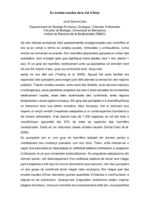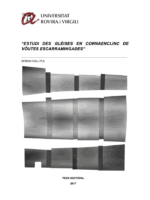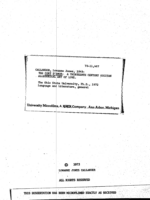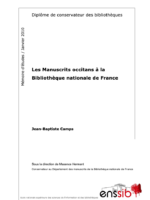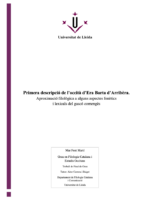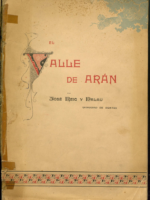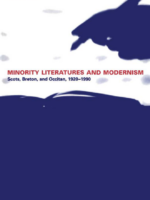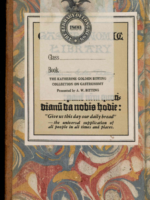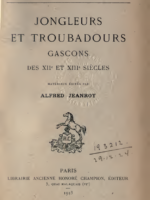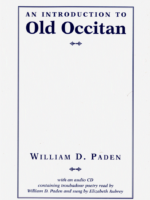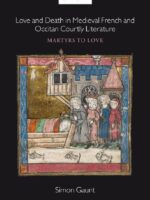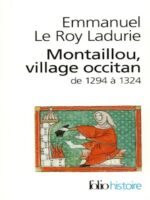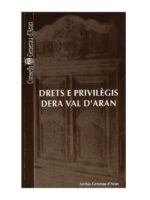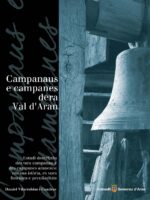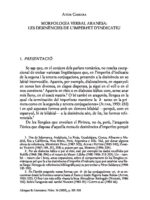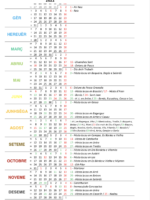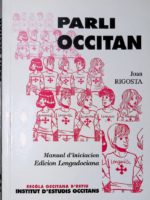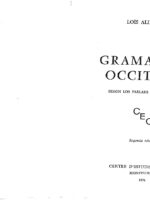Recommended Books
-
Estudi des glèises en cornaenclinc de vòutes escarramingades
0,00 €Era Val d’Aran se place ena cara Nord des Pirenèus. Es sues caracteristiques geografiques e climatiques, atau coma era sua orientacion cap ar Atlantic an condicionat ath long dera istoria toti es factors dera societat entre eri era arquitectura e era construccion. Aguest ei un des principaus motius entà qu’era sua arquitectura age agut ua difusion escassa. Siguec a compdar deth torisme pirenenc provinent de França que siguec coneishuda. Violet le Duc, Elies Rogent, Puig i Cadafalch, Domenech i Monater e Basegoda Nonell son autors que posterioramente realizen aportacions scientifiques subergessentes.
Era presenta investigacion se plantege en contèxte dera assignatura de Construccion VI dera Escola d’Arquitectura de Reus dera Universitat Rovira i Virgili. Es trabalhs practics des alumnes suscitèren er interès ena generacion dera informacion damb metodes de captura massiva de donades coma er escanèr lasèr. Es campanhes d’escaneg lasèr se realizen en totes es glèises dera Val d’Aran, en tot hèr-ne un totau de 43 e sonque se prescindís der escaneg dera glèisa de Baqueira e dera glèisa consagrada de Mijaran. Autant ua coma era auta son de recenta construccion.
Aguesta Tèsi Doctorau se centre en estudi des glèises deth prumèr romanic segontes era classificacion d’Emmanuel Garland. Ei vertat qu’autors coma Puig i Cadafalch heren a conéisher e descriueren quauques glèises, principaument es glèises basilicaus. Ua des caracteristiques mès importantes dera arquitectura romanica ei er us de voutes. Puig i Cadafalch e Basegoda Nonell sagèren d’explicar era sua origina e forma.
Un prumèr objectiu ei eth de generar ua documentacion planimetrica, realizada a compdar de bromes de punts que complemente era ja realizada per Domenech i Montaner, Puig i Cadafalch e Bassegoda Nonell.
Un dusau objectiu consistís en estudi des construcciones prescientifiques. Aguestes plantegen un especiau interès entà determinar quines son es principis en qué se basauen es constructors des edificis romanics. Es obres de fabrica dera Val son absoludament deformables e formarien part d’aguest grop de construcciones damb aguesta fenomenologia caracteristica. Es glèises romaniques dera Val d’Aran son un conjunt unitari d’edificis qu’an estat poc alteradi ath long dera istoria.
Es resultats mostren dues tipologies d’edificis qu’atien a principis geometrics e d’estabilitat plan diferenti. Tanben mostre era viabilitat deth metode seguit entar estudi des assetaments e esbauçaments en tot èster d’utilitat tanben entà cimentar es bases entà obtier critèris de simplificacion que permeterà estudis damb elements finits. -
The “Cort d’Amor”: A Thirteenth Century Occitan Allegorical Art of Love
0,00 €With the exception of the romance of Flamenca, and to a lesser extent, the Arthurian romance of Jaufre. the medieval Occitan narrative poems of the thirteenth century have attracted very little scholarly attention, and among the shorter novas, only one, the Castla-gllos by Raimon Vidal, has been published recently. No full length study of Occitan allegory has yet appeared, al though one scholar,. Marc-RenS Jung, did devote one chap te r to th is topic in a broad survey of the medieval allegorical poem: Etudes sur le poeme allégorlque en France au rao.yen age. Unfortunately, nearly all studies of medieval allegory that have appeared In the last two decades take one or another of the great epic allegories like The Romance of the Rose. The Divine Comedy, or The Canterbury Tales, as. either point of departure or point of arrival, and as a result, the ensuing source studies or definitions are inevitably distorted by the magnetic field that such masterpieces ordinarily deploy. This tendency is particularly disappointing (in view of the fact that the Occitan allegories are, for the most part, earlier than the Romance of the Rose of Guillaume de Lorris, the first of these epic allegories. For this reason, if for no other, they deserve to be considered for and .by themselves.
-
Les manuscrits occitans à la Bibliothèque nationale de France
0,00 €La Bibliothèque nationale de France conserve, pour le domaine de la littérature oc- citane du Moyen Âge, la plus vaste collection de manuscrits au niveau mondial. Pourtant, en dépit de son extraordinaire richesse, cette collection n’a qu’assez rarement été prise en compte en tant que telle et, quoique très étudiée par les chercheurs, demeure à certains égards méconnue. Une cause probable en est le fait que les manuscrits occitans, cotés en Français ou en Latin, ne constituent pas un fonds cohérent à l’origine unique, mais ont été acquis en divers lieux et en divers temps, sans faire l’objet d’une cotation propre. Ce mémoire se donne pour ambition de fournir un outil de connaissance de cette collection, qui soit profitable aux démarches de valorisation et de conservation le concernant.
-
Primera descripció de l’occità d’Era Barta d’Arribèra
0,00 €Dins del domini gascó, i alhora reflectint la situació occitana general, hi ha una variació interna notòria entre les diferents varietats que omplen el territori. En aquest sentit, el comengès, que enclavem en el gascó pirinenc oriental (subdialecte que abasta una zona que comprèn la Vall d’Aran, l’àrea de La Varossa, el Comenge meridional i el Coserans), es diferencia d’una manera prou evident d’altres variants més occidentals, justament per la seua condició de parlar fronterer, situat en una zona interferencial, en paraules de Bèc (1968), entre el gascó i el llenguadocià. El treball que prossegueix mira de fer una descripció d’alguns aspectes fonètics i lexicals d’un dels municipis de parla comengesa, Era Barta d’Arribèra, localitzada estratègicament a pocs quilòmetres de Sent Gaudenç, capital històrica del Comenge i de l’antiga comarca del Nebosan.
-
Minority Literatures and Modernism: Scots, Breton, and Occitan, 1920-1990
0,00 €A quiet renaissance has been unfolding in certain parts of Europe – a renaissance of literature written in minority languages. In this book, William Calin explores the renaissance through an examination of twentieth-century works in Scots, Breton, and Occitan minority languages flourishing inside the borders of the United Kingdom and France.
For each of the three bodies of literature Calin considers major authors whose works include novels, poetry and plays, and shows that all three literatures have evolved in a like manner, repudiating their romantic folk heritage and turning instead to modern and postmodern concerns. Drawing on current critical theories in periodization, postcolonialism and cultural studies, Calin raises a range of comparative questions: Is there a common form of narrative prevalent in minority cultures that is neither realism nor metafiction? Is the minority-language theatre limited to plots treating past history and the rural present? What is the relationship between the minority literature and literature in the national language? What kind of history should be written on the literatures of Scotland, Brittany and the South of France, manifest in their several languages?
Calin’s pioneering study is the first comparative scrutiny of these minority literatures and the first to bring all three together into the mainstream of present-day criticism. His work demonstrates the intrinsic importance in their twentieth-century renewal, as well as their contribution to global culture, in both aesthetic and broadly human terms.
-
-
An Introduction to Old Occitan
0,00 €An Introduction to Old Occitan is the only textbook in print for learning the language used by the troubadours in southern France during the Middle Ages. Each of the thirty-two chapters discusses a subject in the study of the language (e.g., stressed vowels, subjunctive mood) and includes an exercise based on a reading of an Occitan text that has been edited afresh for this volume. An essential glossary analyzes every occurrence of every word in the readings and gives cognates in other Romance languages as well as the source of each word in Latin or other languages. The book also contains a list of prefixes, infixes, and suffixes and a dictionary of proper names. An accompanying compact disc includes discussion of the pronunciation of the language, with illustrations from the texts in the book, and musical performances by Elizabeth Aubrey, of the University of Iowa.
-
Love and Death in Medieval French and Occitan Courtly Literature: Martyrs to Love
0,00 €Some of medieval culture’s most arresting images and stories inextricably associate love and death. Thus the troubadour Jaufre Rudel dies in the arms of the countess of Tripoli, having loved her from afar without ever having seen her. Or in Marie de France’s Chevrefoil, Tristan and Iseult’s fatal love is hauntingly symbolized by the fatally entwined honeysuckle and hazel. And who could forget the ethereal spectacle of the Damoisele of Escalot’s body carried to Camelot on a supernatural funerary boat with a letter on her breast explaining how her unrequited love for Lancelot killed her? Medieval literature is fascinated with the idea that love may be a fatal affliction. Indeed, it is frequently suggested that true love requires sacrifice, that you must be ready to die for, from, and in love. Love, in other words, is represented, sometimes explicitly, as a form of martyrdom, a notion that is repeatedly reinforced by courtly literature’s borrowing of religious vocabulary and imagery. The paradigm of the martyr to love has of course remained compelling in the early modern and modern period.
This book seeks to explore what is at stake in medieval literature’s preoccupation with love’s martyrdom. Informed by modern theoretical approaches, particularly Lacanian psychoanalysis and Jacques Derrida’s work on ethics, it offers new readings of a wide range of French and Occitan courtly texts from the twelfth and thirteenth centuries, and argues that a new secular ethics of desire emerges from courtly literature because of its fascination with death. This book also examines the interplay between lyric and romance in courtly literary culture and shows how courtly literature’s predilection for sacrificial desire imposes a repressive sex-gender system that may then be subverted by fictional women and queers who either fail to die on cue, or who die in troublesome and disruptive ways.
-
Montaillou, village occitan de 1294 à 1324
0,00 €Montaillou: un petit village de montagnards et de bergers en haute Auriège, à 1 300 mètres d’altitude. En 1320, Jacques Fournier, évêque de Pamiers, plus tard pape d’Avignon, y déploie ses talents d’inquisiteur. Il finit par déterrer tous les secrets du village.
Rien n’échappe à cet évêque fureteur, ni les vies intimes, ni les drames de l’existence quotidienne.
En s’appuyant sur cet extraordinaire document de Jacques Fournier, sorte de roman vrai du petit peuple du XIV siècle, Emmanuel Le Roy Ladurie ressuscite, en utilisant les méthodes historiques et ethnographiques les plus actuelles, la réalité occitane et cathare d’il y a six cent cinquante ans.
-
Drets e privilègis dera Val d’Aran
0,00 €En 1944, Manuel Abizanda e Broto deth Servicio de Defensa del Patrimonio Artístico Nacional publique era transcripcion e studi d’un manscrit titolat Índice Privilegios. Abizanda conde que dit manuscrit siguec amagat tà liurar-le deth perilh des “hodas rojas y marxistas” pendent era epòca Republicana e Guèrra Civila.
En 1938, un còp liberada era Val d’Aran pes nacionaus, er avocat Jaume Sala entreguèc dit manuscrit ath Servicio. Abizanda qu’ère agent d’aguest servici hec er estudi comentat adès.
En sòn trabalh ditz qu’un còp estudiat, eth manuscrit serà restituït entar Archiu Notariau, mès non especifique s’ei er archiu notariau deth districte de Vielha o parle d’un aute districte. Actuaument se desconeish a on se trape dit manuscrit e sonque auem notícies d’eth pera publicacion de 1944.
Pera descripcion hèta per Abizanda sabem qu’et manuscrit cònste de 50 fuelhs escrits e 40 fuelhs en blanc. Ei enquadernat en pergamin e mesure 14x10cm.
-
Campanaus e campanes dera Val d’Aran
0,00 €Aguest seriós estudi qu’auetz enes mans ei ua campanada ena nòsta cultura, que mos enlumene sus un des aspèctes mès desconeishuts dera nòsta istòria. Ei damb gòi que guardam es campanaus lheuar-se orhulhosi ath miei des nòsti pòbles. Son eth referent paisagistic e visuau… e damb eth sòn penetrant tapatge mos enlumènen tanben en nòste moviment.
Ena nòsta vida diària i son presentes es campanes, i an estat des de hè molt… des de tostemp, e ena nòsta petita literatura ne parlen diuèrsi autors. Auíem de besonh aguest estudi, mos calie articular damb rigor un discors que mos permetesse explicar que tanben ath torn d’aqueres majestuoses tors s’a gestat era nòsta identitat.
-
Morfologia verbal aranesa
0,00 €Se sap que, en el conjunt dels parlars romànics, no resulta excep- cional de trobar varietats lingüístiques que, en l’imperfet d’indicatiu de la segona i la tercera conjugacions, presentin a la desinència un so labial intervocàlic. Apareix, per exemple, dialectalment, en espanyol: en zones ben diverses, en clapes disperses, ja sigui en el vell o en el nou continent. Apareix en rètic o en dialectes itàlics: com, sense anar més lluny, en el toscà mateix. O bé també en aragonès, llengua en la qual «la terminación del imperfecto mantiene la -b- tanto en la primera como en la segunda y tercera conjugaciones» (ALVAR, 1953: 230) i en què aquestes formes amb un element bilabial —perquè, com en espanyol, hi és bilabial— a la desinència són, de fet, les formes referencials.
L’objectiu, doncs, no és de tractar d’afers —recurrents, per altra banda— com l’origen etimològic o analògic d’aquell so consonàntic, sinó sobretot de treure a la llum dades que hi fan referència: informa- cions obtingudes durant els darrers set anys arreu dels pobles de la Vall d’Aran —i també del Comenge veí, ja a l’Estat francès— a través d’enquestes de tipus dialectològic de format —diguem-ne— clàssic.

